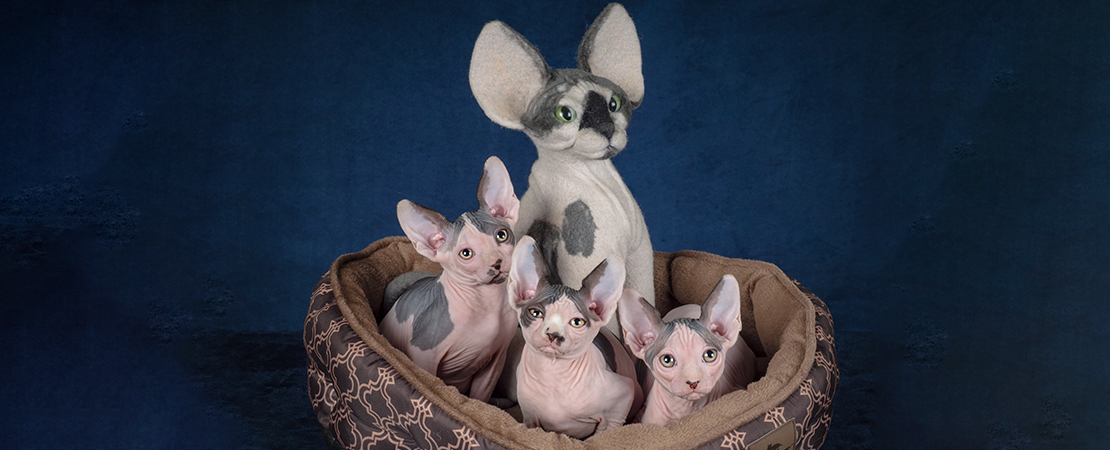Vaccines and the purpose behind multiple vaccinations in kittens can be a bit confusing for a lot of pet owners (and breeders). I think this warrants a simplified explanation so that we can all be better equipped with more understanding of the process.
First, let’s elaborate on the immune system. Think of the immune system as a three part machine.
SKIN BARRIER/MUCOSAL BARRIER
The skin is one of your kitten’s first methods of defense against any invasive pathogen. Different mechanisms like proteins and cilia can stave off bacterial/viral/fungal infiltration. Because this is the first method of defense in protecting your kitten’s health, it is critical that the skin is optimally cared for. Diet plays a significant role, as does genetics and environment. If the skin barrier is broken, for example with a cut, bacteria can bypass that barrier and proliferate and cause infection. Cat milk also contains Immunoglobulins throughout lactation, not just in colostrum. These Immunoglobulins provide protection in mucosal surfaces (Mouth, nose, etc) and the GI tract, so nursing plays a very important role in a kitten’s over all health.
INNATE UMMUNITY
The Innate Immune System is inherited. It comprises lots of different cells that act like a little badass army, that can differentiate between common pathogens and self-tissues (the kitten’s own body). It doesn’t create specific or targeted responses, instead foreign pathogens are recognized and attacked in a broad manner of acute inflammation which initiates white blood cells to kill the invading organism. Think of it as a broad, nonspecific reaction to broad, nonspecific pathogens.
ADAPTIVE IMMUNITY
Adaptive, or specific immunity happens with vaccinations, they are not born with it, it must be acquired. The goal is to introduce a specific deleterious organism in a safe manner, so that the Adaptive Immune Response learns to recognize and combat it. If the Adaptive Immune system comes into contact with the specific organism in the future, the Adaptive Immune Response is specialized to combat it much more swiftly and effectively.
So, now we know our goal with vaccinations; to introduce specific pathogens in a safe and controlled manner so that the Adaptive Immune Response learns to recognize and effectively kill said pathogen. But, why do we vaccinate kittens with the same vaccine multiple times over the course of several weeks? To understand that we need to talk a bit about transferred immunity and maternally derived antibodies.
Maternally Derived Antibodies (let’s use “MDA” as an abbreviation)
MDA is acquired by way of colostrum during the first 24 hours of life. The quality of the MDA is reliant on the mother and her own Immune System and antibodies. MDA hits a peak at about 2 days of age, and concentrations begin to be depleted (by way of catabolism) around 5-16 weeks of age. Within a given litter, we might have one kitten who’s MDA is waned by 10 weeks, while a sibling is waned at 15 weeks and yet another waned at 7 weeks, without any dependable way of knowing. Generally, we vaccinate kittens with FVRCP (core vaccine comprising of Rhino, Calici, Feline Distemper) at either 8, 12, 16 weeks OR 10, 16 weeks OR 12, 16 weeks. Let’s use the first and most common vaccine schedule of 8, 12, 16 weeks for our example. Our goal of multiple vaccines spaced several weeks apart is to ensure that each kitten is vaccinated as close to the point in which their MDA has waned as possible to reduce the duration of time where they have no active protection. Let’s say we have three kittens; A) kitten’s MDA wanes at 7 weeks, B) kitten’s MDA wanes at 11 weeks, and C) kitten’s MDA wanes at 16 weeks. When we vaccinate these kittens at 8 weeks of age, kitten A will no longer have been protected by MDA and the vaccine will illicit an Adaptive Immune Response to the targeted organisms, exactly as we want it to. Kittens B and C will result in vaccine failure because they still have MDA and those antibodies will fight the pathogens themselves in place of the kitten’s own developing immune system. The second round of vaccines will be superfluous for kitten A as this kitten has already mounted an adaptive immune response via the previous vaccine (it wont hurt the kitten, though), but kitten B will now be able to create an adaptive immune response as well since its MDA waned one week ago. Kitten C will still result in vaccine failure as this kitten still has MDA till 16 weeks in our little hypothetical scenario. The final vaccine at 16 weeks will ensure that kitten is properly protected though. This is why it is irresponsible to allow kittens to leave for their new homes prior to 16-17 weeks old. They might be potentially at risk of exposure to pathogens which they have no adaptive immune response to, during a time in which their Innate Immune System is functioning less optimally due to stress of a new environment and life changes. Those few extra weeks at their breeder’s home can more safely ensure that they are ready to tackle their new life, with a more mature and effective immune system.
As a little side note, we do have a nifty means of determining antibody levels for some diseases, like rabies and parvo, with a test called a Titer. Titer testing is not recommended by the AAFP Feline Vaccination Advisory Council in place of vaccinations though.
-Shauntay Burris
